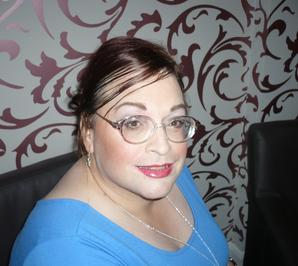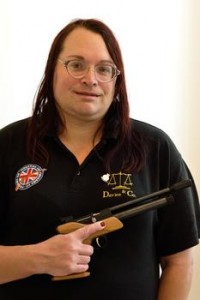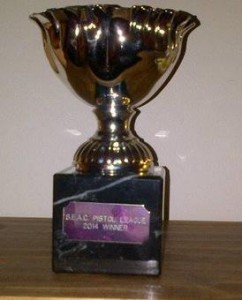
This month, we spoke to Kate Griffiths, winner of the Kent County HFT (Hunter Field Target) Pistol Championship and the SEAC (South East Airgun Club) HFT Pistol Championship. Kate told us about her shooting career so far, her love of Umarex and Steyr airguns, and her hopes of competing in the 2020 Olympics in Tokyo.
When did you start shooting? Were you very young?
No, I’ve only been shooting seriously, as a sport, for a few years. I’d handled guns before, of course, during my army training, but it wasn’t something I had a great interest in. And then I started watching the shooting events at the 2012 London Olympics – and I got hooked. I actually got the opportunity to go to the Royal Artillery Barracks in Woolwich, where the shooting events were held, and I really felt the urge to have a go. So I joined my local gun club and found I was pretty good at it!
In 2014 I took part in a talent-spotting event – Target Tokyo, they called it – in Bisley, organized by British Shooting, which is an umbrella organization for the five national governing bodies for shooting in the UK, and I was picked out as a potential Olympic contender.
Tell us a bit about your army career.
I served in the 2nd Royal Tank Regiment as musician and medic.
Musician! What do you play?
Cornet and trumpet. I’m very fond of Big Band music, and I’ve played in a couple of Big Band orchestras. It’s traditional, in the army, for musicians to receive medical training, because, historically, the band was always there on the front line, leading the way into battle. It was the bandsmen’s job – those who survived – to tend to the wounded. Although this combined role doesn’t apply nowadays, it’s just a tradition that’s stuck. I was in service during the Gulf War in 1990 to 1991. I saw some terrible things. I was only nineteen.
What shooting disciplines do you enjoy the most?
There’s a relatively new shooting discipline called Iron Plate Action Shooting (IPAS), designed specifically for multi-shot CO2 cartridge pistols. I’ve had a lot of fun with that. The objective is to hit all five metal targets in as short a time as possible. You start in the ‘surrender’ position – hands raised, either side of your head. The official asks if you’re ready, and then says, “Stand by,” and when the starter signal sounds, you draw your gun and fire until you’ve hit all five targets (or until you’ve run out of pellets!). You do the course of fire five times, and the fastest four times count towards your score. This is normally done 10 times in a match.

And what’s your choice of gun for IPAS?
I use a .177 Umarex Colt M1911 airsoft semi automatic pistol with a circular eight-shot magazine. This is a superb reproduction from the German manufacturer, Umarex. In fact, the original model is a real classic – it’s still in production today.
What event are you hoping to compete in, in the 2020 Olympics in Tokyo?
The 10 metre Pistol Target Shooting – an event for single-shot air pistols. You shoot a set number of pellets at a standard target, from a distance of 10 metres. Each shot must be taken within 75 seconds. The scoring is a standard 10 points for the bull, down to one point for the outermost ring. Training for 10-metre competition is basically putting lead down range and working on technique. I do an actual Olympic match – i.e. shoot 40 pellets in one hour.
What gun do you use for this event?
I have a new gun – a Steyr LP 10E air pistol. It’s made by an Austrian manufacturer, and it has a great track record. It was used to win all the gold medals in the 2004 Olympics, the 2008 Olympics, and the 2012 Olympics, as well as the ISSF World Shooting Championships in 2006 and 2010.
British firearm laws are pretty tight. Is that a problem in competition shooting?
Yes, it can be. There was an incident during the 2014 Commonwealth Games in Glasgow. Rachel Carrie, a British shooter who was taking part in the competition, arrived late at night at a hotel in Dundee for an event the next day, and the hotel staff called the police because she had her shotgun with her. Rachel produced her shotgun licence and explained that she was a competitor in the Games, but she was questioned for hours, and her gun was kept at the local police station overnight. She didn’t get a lot of sleep that night.
You’ve been very active in the campaign against transgender discrimination in sport. How have the regulations affected you?
Until 1996, shooting was a mixed sport. But the 2004 ruling – which is actually documented as ‘recommendations’ – puts a blanket ban on transgender participants until two years after genital  surgery. Another condition is that enough hormonal therapy has been received to ‘minimise gender-related advantages in sport competitions’. Well, it was only twenty years ago that there was considered to be no gender-related advantage in shooting. Very importantly, the final recommendation is that there will be a ‘confidential case-by-case evaluation’.
surgery. Another condition is that enough hormonal therapy has been received to ‘minimise gender-related advantages in sport competitions’. Well, it was only twenty years ago that there was considered to be no gender-related advantage in shooting. Very importantly, the final recommendation is that there will be a ‘confidential case-by-case evaluation’.
I’ve been working with British Shooting on the development of their policy regarding transgender shooters competing in the UK. I’m now turning my attention to the ISSF (International Shooting Sport Federation), in the hope that I can get them to modernise their transgender policy.
What’s the make-or-break factor when it comes to your chances of making the 2020 Olympic team?
Sponsorship. Training and competitions cost an awful lot: there’s range time, pellets, air or CO2 (for the pistol), travel, entry fees, accommodation … Corporate sponsorship isn’t easy to find for this sport, because many companies are reluctant to be associated with shooting. On my website there’s a sponsorship appeal, with a link for donations. I’m hoping that enough people and businesses will be behind me to help me achieve my dream.
Both the Steyr LP 10 E and the .177 Umarex Colt M1911 are available to buy at Pellpax. We’ve got a range of Steyr air pistols here. You can find Kate’s site here.
